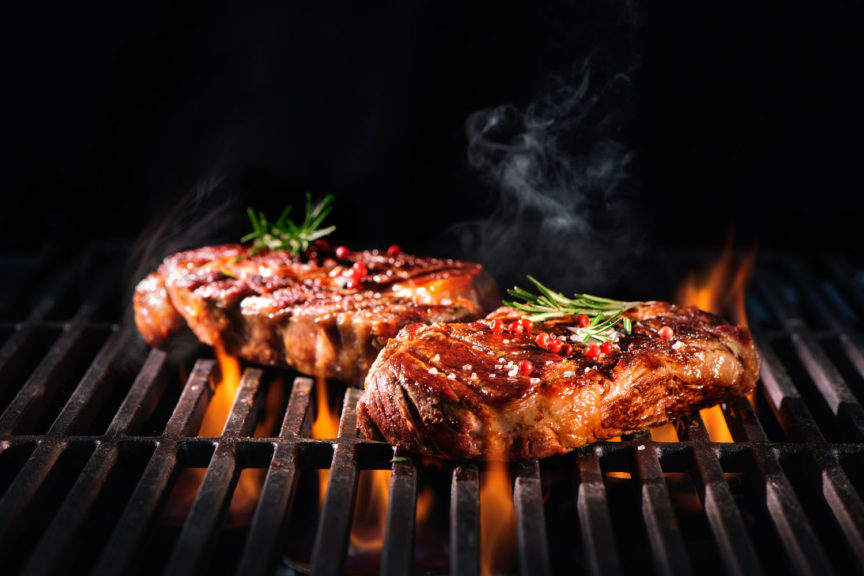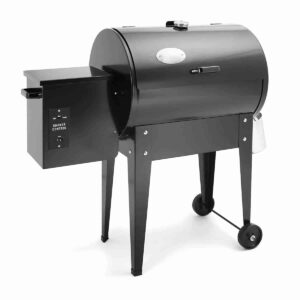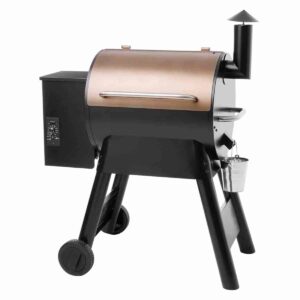The Quest for the Perfect Steak
It’s been going on ever since cavemen were clubbing each other over the head for the best cuts of venison. However, as man evolved, his taste evolved with him and steak preparation became an art. Complex questions arose: Which meat is the best for steak? How best to season the steak? … and maybe most importantly – How long to leave the dry rub on?
As the season for the barbecue approaches, the answers to these questions become more pertinent. The people have spoken, and they’re asking for steak. Will you be able to rise to the occasion? Here are a few tips and recipes to get you through barbecue season like a boss.
Picking the Right Steak For Grilling
The quest for the perfect steak starts with picking the right cut of meat (not to be confused with the best cut of meat). Just because the cut is superior doesn’t mean it’s the right one to suit your purposes.
Take Filet Mignon, for instance. It may be perfect for fine dining, but if you’re looking to grill for a group of people, you’re likely to run up a large tab. The filet mignon is the most tender of steaks and consequently the most expensive.
Sirloin, on the other hand, is one of the best steaks for grilling. It’s large in size and delivers a rich beefy flavor. It makes a nice skewer and is a good way of stretching a dollar when you’re on a lean budget (pun intended, sirloin is a lean cut – watch out for overcooking).
The Ribeye is arguably one of the best cuts for the job because of the fat marbled throughout the cut and the location of the selection. This meat is sure to deliver a punch of flavor whether you’ve chosen to grill with charcoal or propane and regardless of your preference of medium rare through well done. (however.. We recommend medium rare with Kosher salt. It’s simply and really all that is needed for an amazing grilled steak)
The T-Bone steak (a.k.a. Porterhouse) is suited grilling to the T-Bone. Half New York Strip, half filet mignon, separated by a succulent bone, this cut is done right is a shoo-in for the perfect steak. But no matter how well it cooks on the grill you may not want to toss it on too casually. Unless you’re a Kardashian, we wouldn’t recommend handing T-Bones out as party favors.
A good rump always makes for a great party, and Rump Steak is great for a barbecue. Although flavorful, rump steak is tough after all the cow does use it a lot and grilling it requires bringing out its more tender side.
Here is a recipe for rump steak so tender, it will melt in your mouth.
Melt In Your Mouth Rump Steak
Directions
- Marinate the Rump Steak in your marinade of choice (2 hours in the fridge). Soy-based marinades work best: consider teriyaki, chipotle, garlic or even beer or red wine.
- Remove steak from fridge and allow it to reach room temperature.
- Add enough olive oil to the grill to completely coat the surface and throw on the steak. Sear the outside of the steak until it turns a rich brown color. This will lock in moisture.
- Be sure to turn the steak only once as you cook it. Turning the steak too many times will make it tougher and piercing with a fork will only cause its juices to run out.
- Cook steak to somewhere between medium (140-150 degrees Fahrenheit) and medium rare (130 – 140 degrees Fahrenheit).
- Remove steak from grill and cut with a sharp knife for maximizing tenderness.
- Put it in your mouth and let the melting begin.
What should I put on my steak before grilling?
When it comes to answering this question, you sort of have a multiple choice. The simplest answer is, “whatever you like.” However, if you’re new to steak grilling, you may not know what you like and are more interested in hearing the options. Also, if you are new, check out these cost effective grills to help you get the job done. With respect to what to put on your steak, here are a few great options that are sure to bring you delicious success:
Seasoning a Steak
Although you can get quite exotic with your seasonings and marinades, seasoning a steak is rather simple. All it really takes are two simple ingredients:
- Kosher salt (emphasis on the word kosher – regular table salt won’t do the trick)
- Black pepper
Kosher salt is the best kind because it grabs on to the meat. As far as the pepper, season to your own taste. Keep in mind that the pepper will not only spice up the steak but also lend it a little bit of crunch. Use freshly ground pepper for best results.
If pepper and salt seem a little ho-hum to you, there are more exotic seasoning recipes to try. Here’s one that will have no problem waking up your taste buds – it even has coffee in it.
Morning Bull Seasoning
Directions
- Mix the below ingredients together in a small bowl (below is for 2-3 steaks)
- Brush the steak lightly on both sides with olive oil just minutes before grilling
- Sprinkle your seasoning over the meat
- Cook according to your preference
Ingredients
1 tablespoon kosher salt
1 tablespoon fresh ground pepper
1 tablespoon ground coriander
2 teaspoons ground coffee
2 teaspoons mustard powder
1 teaspoon unsweetened cocoa powder
½ teaspoon ground cloves
½ teaspoon chili powder
½ teaspoon ground cinnamon
½ teaspoon cayenne pepper
½ teaspoon ground cloves
Brush some butter on the steak
Brushing oil on a steak may seem like less of a choice, if you want to keep your steak from sticking to the grill, that is. However, you do have the option of brushing your steak with butter. It may be high in saturated fat, but, as they say, everything’s better with butter. You can also use an oil butter combo. Just make sure the oil is not dripping in excess from the steak; it can cause a fire on the grill!
Marinades as Tenderizers
One of the best ways of tenderizing steak is by letting it sit in an acidic marinade. (See the melt in your mouth rump roast recipe above). The acids break down the tough protein strands in the meat and making it less tough and it more flavorful at the same time. To some the marinade is the seasoning, others add seasoning to the marinade to enhance its flavor.
Fruit As a Tenderizer: Ever wonder why aged meat is more tender than fresh meat? It’s because the meat contains enzymes that break it down over time. However, no matter how tender it gets, old meat is not worth the wait. If you have ever seen meat after it has sat around a while, you can relate.
A good way to speed the process is by using fruit as a tenderizer. Tropical fruits, namely kiwis, figs, papaya, and pineapple have enzymes that work in much the same way as the enzymes in meat. Instead of using more conventional methods, such as wine and vinegar, you can layer your meat with these fruits. Slap on some tangy bbq sauce to mask the fruit flavor.
Commercial Tenderizers
If you want the enzymes without the fruit, you may want to look into commercial tenderizers. These are dry powders made from the papaya enzyme papain. They’re a little easier to use than the fruit itself and do not have the fruity flavor.
Marinade Recipe
Sometimes marinades are more about taste than tenderizing. Here is a marinade recipe that’s got a powerful flavor, but manages to keep it tender at the same time.
Ingredients
1/4 cup olive oil
¼ cup of soy sauce
¼ cup balsamic vinegar
¼ cup of soy sauce
¼ cup Worcester sauce
2 teaspoons minced garlic
2 teaspoon Dijon mustard
Salt and pepper
Directions
Mix ingredients together in a small bowl. Season with salt and pepper to taste.
Marinate steaks for at least two hours for best results.
Dry Rub
The dry rub is a combination of spices, sugar, herbs, salt, and pepper. The grilling causes the sugar to caramelize, forming a tasty crust that seals in the flavor and juices.
While many cuts of meat are available, (see section on choosing the right meat for proof) only some are suited for dry rubs. Because thinner steaks can be overwhelmed by the strong flavor of the dry rub, it is best to use a thicker cut ( at least ¾ of an inch). The best choices are rib-eyes, sirloins, T-Bones and New York strips.
You can follow a recipe for a rub, or you can make your own. The usual suspects include:
- Cayenne
- Onion
- Garlic powder
- Cumin
- Brown sugar
- Paprika
- Thyme
- Chili flakes
- Onion
- Garlic
The only essential ingredients are the salt and pepper. The rest is up to you. (You will need about ¼ cup of rub per steak).
Apply a generous amount of rub to one side of the steak and rub with your hand until the surface of the meat is completely covered. Turn it over and do the same to the other side.
How long do you leave the dry rub on a steak?
While the dry rub can be applied right before grilling, you’ll get the best results by leaving the steaks in the refrigerator overnight. Once the steaks have reached room temperature, put them on a preheated grill and cook at your desired temperature. Keep in mind that rubs burn easily so make sure to keep steaks over low heat. Grill for about seven minutes each side and prepare to get rubbed the right way.
A Few More Words of ‘Steak’ Wisdom
A cold steak is a tough steak, make sure your steak is at room temperature before cooking.
The best way to cook a steak is quick and hot, that means a high temperature for a short time period. The longer a steak cooks, the tougher it will be. Enjoy your barbecue experience, may all of your cuts of beef the best ones for grilling, and may your steaks be as tender as your moments spent enjoying them!
Check out our Recent Posts
Z Grills Review
If you’re looking for a grill that will last, Z Grills is the way to go. Z grills are made of the best quality materials...
Read MorePit Boss Pellet Grill Review
Pit Boss is one of many when it comes to manufacturers of wood pellet grills and smokers. If you have spent any amount of time...
Read More10 Fun Benefits of Taking an Online Cooking Class
There’s never been a better time to take an online cooking class. With the continued popularity of online learning, there are more and more exciting...
Read More



